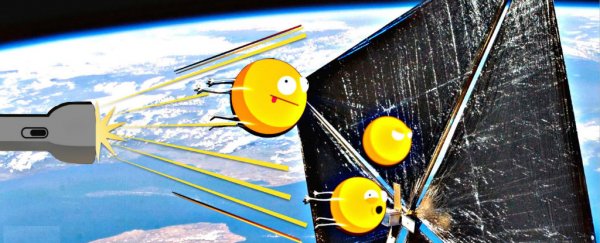On its own, a single light particle (or photon) isn't exactly the miracle propellent we've been searching for - a single photon can push an object with about 1 quintillionth of the force of a snowflake dropping on your cheek. But out in space, where innumerable photons are constantly being expelled from the Sun, and there's no friction to push back, the combined energy and momentum of all these light particles might just be enough to propel an entire spacecraft around, says the episode of Physics Girl above.
That's the thinking behind the Planetary Society's Lightsail - a solar-powered spacecraft equipped with a giant, 32-square-metre sail that quite literally sails on sunlight just like a boat sails on the wind. Announced back in June, the spacecraft works because when the photons reflect off the Lightsail, they enact a simple transfer of momentum, bouncing off the highly reflective surface instead of being absorbed.
Even better than just propelling the spacecraft forward, Japan's Ikaros lightsail actually uses photons to maneuvre it around by changing the reflectivity of certain areas on the sail. The way they do this is genius - liquid crystals, which are similar to the ones in your phone's LCD screen, can increase or decrease the reflectivity of a given side, and whichever side is 'shiniest' is the one that gets more push.
But let's back up a little here, because when we're talking about the molecules in wind that propel a boat through the ocean, we're talking about molecules that have mass, so of course they have a force and momentum. But photons have no mass, so how can something with zero mass have any momentum at all?
Think back to high school science, and you should remember the classic "momentum equals mass times velocity" formula, or p = mv. Well if mass equals zero, momentum has to equal zero too, right? Not exactly, says Physics Girl, because of Einstein's general theory of relativity. Yes, that old chestnut. It states that something can have momentum even if it has no mass - it just has to have some amount of energy.
I'll let Diana explain that to you in the video above, and how all of this is set to propel the spacecraft of the future to far-flung cosmic destinations. Here's one that the Planetary Society prepared earlier:
